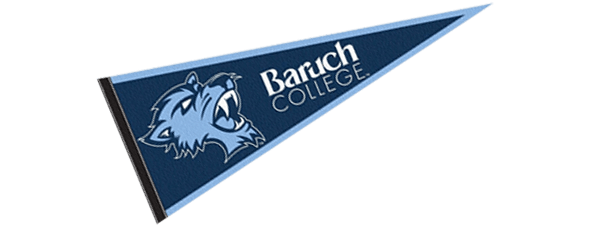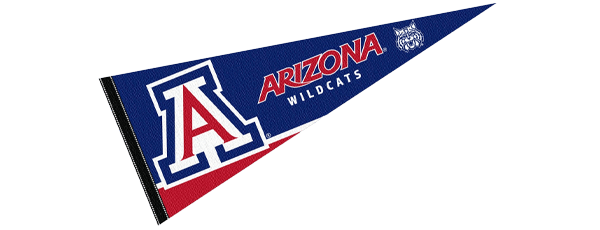The Zicklin School of Business Restores its Confidence in the Path Forward
Challenge
The Baruch College Zicklin School of Business needed to address shrinking enrollment for its Executive Programs, partially due to the market starting to view such programs as a “luxury”, and also based on the hyper-competitive New York City market.
The truth for Zicklin: Enrollment levels were insufficient for profitability, putting the sustainability of some of their programs at risk.
“We needed a firm to help us navigate that reality and work in tandem with us to make sure we were doing the best we could,” said Tricillia Jacob, Sr. Director of Administration & Operations of Executive Programs at Baruch Zicklin.
Solution
GPRS partnered with Zicklin, performing an in-depth Enrollment Growth Assessment designed to “diagnose” the cause of a school’s specific challenges.
The assessment began with an extensive questionnaire, and later included in-depth interviews with key stakeholders and a number of working sessions to prioritize goals and ideal outcomes.
“With the diagnostic, GPRS outlined recommended next steps – each action item regarding marketing and recruiting made sense to us,” said Gwen Webb, Associate Dean of Executive Programs at Baruch Zicklin.
Baruch needed to better track initial inquiries through to application, get a solid understanding of sources for leads, and track leads through the process.
In addition to long-term recommendations, the comprehensive report “identified some key areas that we could tackle right away,” said Jacob.
The assessment identified stalled leads as a key area to address immediately. GPRS stepped in with an immediate and impactful solution.
GPRS used the knowledge gathered from the assessment to implement its Call Center solutions to help Zicklin connect with interested prospects who were “stuck” in the funnel. The call center augmented Zicklin’s staff and gave prospects the personal touch needed to convert an inquiry into an enrolled student.
Results
In just a four-week period, the GPRS call center initiative re-engaged stalled prospects and set 162 appointments for Zicklin’s admissions teams.
GPRS’s assessment and calling solution not only increased short-term enrollment but also positioned Baruch on a path toward sustained growth and profitability, forging a lasting partnership.
“I want to keep GPRS to myself so they make me look better!” said Jacob. “I’m looking forward to working with them long-term.”

0
Weeks in the Campaign
0
Appointments Set for the Admissions Team

 Specializations can make your program more attractive to prospective students, especially if they are positioned and explained well. The key is to not only focus on the features of your specializations but also the benefits for the students. In other words — your marketing needs to spell out the “why” for them because adding a specialization takes extra time and focus. Beyond a generalized MBA that will certainly give them a leg up on the competition and a springboard to career advancement, what can a specialization add to their toolkit?
Specializations can make your program more attractive to prospective students, especially if they are positioned and explained well. The key is to not only focus on the features of your specializations but also the benefits for the students. In other words — your marketing needs to spell out the “why” for them because adding a specialization takes extra time and focus. Beyond a generalized MBA that will certainly give them a leg up on the competition and a springboard to career advancement, what can a specialization add to their toolkit? The process your team uses to make decisions about marketing and recruiting involves some of the same steps your prospects use when considering a program. Thorough decision-making includes establishing goals and priorities, obtaining the information, and determining a return on your investment. Here we’ll examine decision criteria
The process your team uses to make decisions about marketing and recruiting involves some of the same steps your prospects use when considering a program. Thorough decision-making includes establishing goals and priorities, obtaining the information, and determining a return on your investment. Here we’ll examine decision criteria 
 Your school’s marketing materials are made up of a carefully curated and balanced mix of messages that highlight your brand promise and program attributes. When your recruiting and marketing teams work together, they can create powerful messaging that connects with prospects
Your school’s marketing materials are made up of a carefully curated and balanced mix of messages that highlight your brand promise and program attributes. When your recruiting and marketing teams work together, they can create powerful messaging that connects with prospects  Your recruiting and admissions process is a complex machine made up of several touchpoints. It’s designed to give you a full picture of your prospect — qualifications, culture fit, and potential for success. But it’s important to keep in mind that while you are gathering data on them — test scores, GPA, and references — your prospects are forming their opinions on your school throughout the recruiting process as well. Here we’ll examine how staff can use personal relationship building in different ways to pull prospects through the funnel.
Your recruiting and admissions process is a complex machine made up of several touchpoints. It’s designed to give you a full picture of your prospect — qualifications, culture fit, and potential for success. But it’s important to keep in mind that while you are gathering data on them — test scores, GPA, and references — your prospects are forming their opinions on your school throughout the recruiting process as well. Here we’ll examine how staff can use personal relationship building in different ways to pull prospects through the funnel.
 As marketers of the higher ed industry, success is often what we focus on. Salaries, promotions, and title changes are king — and we often use them as the reported end goal to show what our students will “become” to entice them to attend our programs. But in marketing our programs, we must remember to strike a balance when composing our messaging and lead with how success is obtained — by adding value and contributing to important conversations in meaningful ways.
As marketers of the higher ed industry, success is often what we focus on. Salaries, promotions, and title changes are king — and we often use them as the reported end goal to show what our students will “become” to entice them to attend our programs. But in marketing our programs, we must remember to strike a balance when composing our messaging and lead with how success is obtained — by adding value and contributing to important conversations in meaningful ways. You’ve identified your program features and benefits. You’ve defined your audience segments through
You’ve identified your program features and benefits. You’ve defined your audience segments through 

